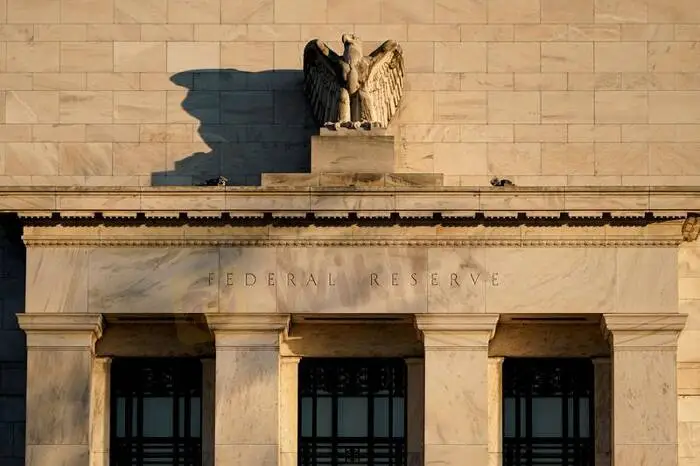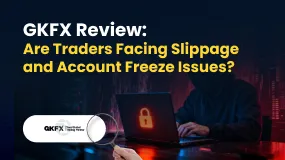简体中文
繁體中文
English
Pусский
日本語
ภาษาไทย
Tiếng Việt
Bahasa Indonesia
Español
हिन्दी
Filippiiniläinen
Français
Deutsch
Português
Türkçe
한국어
العربية
Analysis-Emerging market investors dive for stocks amid Fed storm
Abstract:Developing world investors, buffeted by various “taper tantrums” over the last decade, are now nervously watching as the rainmaker of global markets – the U.S. Federal Reserve – readies its most aggressive rate hike cycle in 17 years.

More hot jobs data on Friday drove the benchmark for world borrowing costs, the 10-year U.S. Treasury yield, to its highest level in two years, prompting yet more gnashing of teeth among emerging market money managers already having a tough year.
Deutsche Banks analysts point out that while some currencies managed to save face here and there, anyone who took the approach of hedging forex risk would have seen only one year that started worse than this one since 2010.
Fed tightening has not been bad news for all EM assets though.
EM stocks measured by MSCI‘s 25-country MSCIEF are flat for the year, which means they have done 5% better than their developed market peers, which is something of a pattern according to Morgan Stanley’s analysts.
“The outperformance of EM (stocks) after the first (Fed) hike is notable,” they said, noting that in Fed hike cycles since 1980, the MSCIEF has been up 17% on average six months after the first rate increase is delivered.
Morgan Stanley analysts have not yet made the call to “buy EM,” but they say “it suggests that the time to get more bullish on EM may be approaching.”
The massive outperformance from Latin American stocks in January could be a harbinger of more EM gains.
(Graphic: EM stocks vs U.S. rates, https://fingfx.thomsonreuters.com/gfx/mkt/akpeznebevr/Pasted%20image%201644004392617.png)
One silver lining in last years rout of Chinese stock markets is that many investors think they have a good chance of rebounding this year with authorities there now providing support to the economy again.
Swiss-based European fund heavyweight Pictet upgraded its view on Chinese stocks to “positive” this week on the basis of that support, and because they would probably be a good hedge in the event of a full-blown Russia-Ukraine military conflict.
“Chinese equities could recoup last year‘s declines and narrow the valuation gap with their counterparts in the coming months,” the firm’s chief strategist, Luca Paolini, said.
(Graphic: Chinese stocks make tentative recovery, https://fingfx.thomsonreuters.com/gfx/mkt/zdvxoanempx/Pasted%20image%201643806581616.png)
DORMANT DOLLAR
However, a more aggressive tightening cycle by the Fed and other top central banks could quickly reignite bond market pressures, said JPMorgans head of emerging market local markets and sovereign debt strategy, Jonny Goulden.
The “taper tantrum” shock of 2013-14, when the prospect of a reduction in post-financial crisis support from the Fed hit emerging market assets hard, still haunts EM veterans.
Returns on JPMorgans hard currency emerging markets bond index EMBI Global Diversified are -2.6% since the start of the year, while those for the local currency fixed income benchmark are at 1%.
“The Fed tightening cycle remains the focus for EM, but so far this year these pressures are curiously materializing in credit rather than local markets,” Goulden said in a note to clients on Friday.
“We would normally expect these forces to drive greater dollar strength, but EM FX (year-to-date) spot returns are +1%.”
Data on capital flows backed up this trend, Goulden added, saying short-term fund flows had also shifted with emerging market local bond funds pulling in more than $1 billion while hard-currency funds suffered $2.3 billion of outflows to start 2022.
Deutsche Bank said since 2013 Mexico, Poland, the Philippines and Hungary are the EMs with the highest correlation to rising U.S. yields, when looking at their local 10-year benchmarks.
“During large moves, we find that all countries (but China) have provided negative returns during periods of extreme bearish moves in U.S. Treasuries,” Deutsches analysts said, showing that bonds from Turkey, the Philippines, Mexico and Peru posted the biggest losses.
Given their expectation of a U.S. 10-year yield at 2.25% by the end of next month, DB analysts imply a forex-hedged return for EM fixed income that would actually outperform Treasuries on a “total return” basis which takes into account any currency move.
“However, this would still not necessarily be a strong buying argument at this point in time,” they said. “We recommend that despite the recent underperformance, investors maintain a more cautious approach on the asset class.”

Disclaimer:
The views in this article only represent the author's personal views, and do not constitute investment advice on this platform. This platform does not guarantee the accuracy, completeness and timeliness of the information in the article, and will not be liable for any loss caused by the use of or reliance on the information in the article.
Read more

Seacrest Markets Exposed: Are You Facing Payout Denials and Spread Issues with This Prop Firm?
Seacrest Markets has garnered wrath from traders owing to a variety of reasons, including payout denials for traders winning trading challenges, high slippage causing losses, the lack of response from the customer support official to address withdrawal issues, and more. Irritated by these trading inefficiencies, a lot of traders have given a negative review of Seacrest Markets prop firm. In this article, we have shared some of them. Take a look!

GKFX Review: Are Traders Facing Slippage and Account Freeze Issues?
Witnessing capital losses despite tall investment return assurances by GKFX officials? Do these officials sound too difficult for you to judge, whether they offer real or fake advice? Do you encounter slippage issues causing a profit reduction on the GKFX login? Is account freezing usual at GKFX? Does the United Kingdom-based forex broker prevent you from accessing withdrawals? You are not alone! In this GKFX review guide, we have shared the complaints. Take a look!

Is Seaprimecapitals Regulated? A Complete Look at Its Safety and How It Works
The straightforward answer to this important question is no. Seaprimecapitals works as a broker without proper regulation. This fact is the most important thing any trader needs to know, because it creates serious risks for your capital and how safely the company operates. While this broker offers some good features, like the popular MetaTrader 5 platform and a low starting deposit, these benefits cannot make up for the major risks that come from having no real financial supervision. This article will give you a detailed, fact-based look at Seaprimecapitals regulation, what the company claims to do, the services it provides, and the clear differences between official information and user reviews. Our purpose is to give you the information you need to make a smart decision about the risks and benefits of working with this company.

Seaprimecapitals Review 2025: A Complete Look at an Unregulated Broker
Seaprimecapitals presents a common problem for today's traders: it offers easy-to-use features and low starting costs, but it lacks important financial regulation. When traders research this broker, it looks good at first glance with features such as a $10 minimum deposit and the popular MT5 trading platform. However, these features come without the investor protections that regulated brokers provide. This review gives you a complete and fair analysis based on available information to help you make a smart decision.
WikiFX Broker
Latest News
Simulated Trading Competition Experience Sharing
WinproFx Regulation: A Complete Guide to Its Licensing and Safety for Traders
Interactive Brokers Expands Access to Taipei Exchange
Axi Review: A Data-Driven Analysis for Experienced Traders
INZO Regulation and Risk Assessment: A Data-Driven Analysis for Traders
Cleveland Fed's Hammack supports keeping rates around current 'barely restrictive' level
Delayed September report shows U.S. added 119,000 jobs, more than expected; unemployment rate at 4.4%
The CMIA Capital Partners Scam That Cost a Remisier Almost Half a Million
eToro Cash ISA Launch Shakes UK Savings Market
Is Seaprimecapitals Regulated? A Complete Look at Its Safety and How It Works
Currency Calculator



